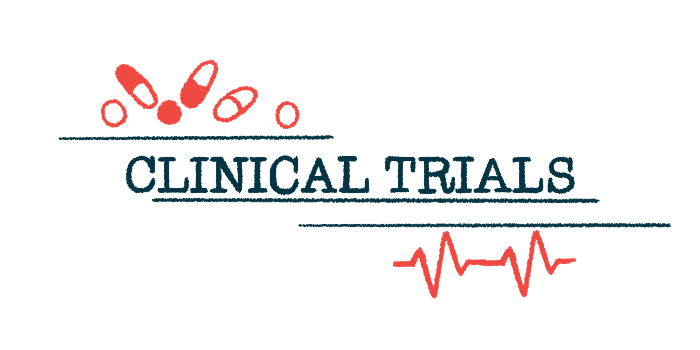IPL344 slows ALS progression in trial, data suggest
Daily treatment for up to 3 years safe, per Phase 2a trial results

Daily treatment with IPL344 for up to three years was safe and appeared to slow amyotrophic lateral sclerosis (ALS) progression, according to recently published data from a small Phase 2a clinical trial.
Patients undergoing treatment gained weight and experienced slower declines in functional abilities and lung function. The treatment also lengthened survival in patients, compared with external placebo groups.
The majority of patients tolerated the drug well, and none discontinued treatment due to safety concerns.
The findings were published in the study, “Akt Activation With IPL344 Treatment for Amyotrophic Lateral Sclerosis: First in Human, Open-Label Study,” in the journal Muscle & Nerve. The work was supported by the therapy’s developer Immunity Pharma, which is planning a large, placebo-controlled trial to further assess IPL344’s safety and efficacy in ALS.
“If the current results will be reproduced in the larger study, they could offer meaningful benefits to individuals living with ALS,” Eran Ovadia, Immunity Pharma’s CEO, said in a company press release.
Signaling boost aims to slow ALS progression
IPL344 is a small peptide that activates the Akt pathway, a signaling pathway that is involved in nerve cell health and survival. Because Akt signaling is reduced in people with ALS, IPL344 may help to prevent nerve damage and slow ALS progression.
After promising results from preclinical studies, in which IPL344 improved neuromuscular function, stopped weight loss, and extended survival in a mouse model of ALS, Immunity launched a Phase 1/2a clinical trial to investigate the therapy’s safety and efficacy in ALS patients.
The trial enrolled eight adult patients who were progressing at a rate of at least 0.55 points per month on the ALS Functional Rating Scale-Revised (ALSFRS-R), a measure of functional ability, for four or more months before study enrollment. This indicates a somewhat fast progression of the disease.
“The study participants were specifically selected for their rapid disease progression,” said Marc Gotkine, MD, principal investigator of the study and head of the neuromuscular unit at Hadassah Medical Center in Jerusalem.
The Phase 1 portion (NCT03652805) of the trial tested increasing daily doses of IPL344 for four weeks to demonstrate safety. After completing this first part, patients continued to receive daily doses in the Phase 2 portion (NCT03755167) for up to three years. Throughout the trial, treatment was given into the bloodstream through an infusion using a central venous catheter.
In addition to the eight patients in the trial, researchers included one other patient in their analysis who had received IPL344 in a similar fashion as part of a compassionate use protocol.
Because the trial lacked a placebo group, the researchers used patients from the PRO-ACT database, which includes data from patients who received a placebo in 16 previous ALS clinical trials, as their external control group.
An analysis that matched patients and controls based on their initial disease severity and rate of progression showed that people on ILP344 progressed at a rate of 0.39 points per month, compared with a rate of 1.09 for control patients — a significant, 64% difference.
When the data were adjusted for the rate of disease progression and onset of symptoms in the bulbar muscles, or those in the face and throat, IPL344-treated participants also gained weight — 0.47 kg (1.03 pounds) each month. This was significantly different from the weight trajectory seen in controls, who lost 0.39 kg (0.85 pounds) monthly.
There was also a significant reduction in the levels of a nerve damage biomarker and a slower lung function decline in treated patients (a monthly reduction of 1.6% vs 2.8%), although this failed to reach significance.
The researchers said the studies in PRO-ACT “rarely included sufficiently long post-treatment follow-up,” so they used another external control group to assess survival. Control patients came from the placebo group of a separate study that “included a long duration of both treatment and follow-up,” the researchers wrote.
In this analysis, people treated with IPL344 survived longer than the controls — an average of 43.4 months (a little over 3.5 years) versus 19.1 months (a little over 1.5 years). The increased survival was not statistically significant, though, likely due to the small population size.
“Despite the small size of study, we were able to demonstrate clinically meaningful improvements in the 5 endpoints assessed,” said Ilana Cohen, PhD, vice president of research and development at Immunity Pharma. “We are encouraged by the magnitude and the consistency of the results.”
The patient from the compassionate use protocol experienced an allergic reaction to the drug that was successfully treated by replacing the bolus infusion with a drop-by-drop infusion and by a dose reduction. Two other patients reported irritation or other symptoms related to the into-the-vein delivery of the drug, which resolved spontaneously or with local treatment. There were no other serious adverse events related to the treatment during the trial period.
“The results observed in this open-label, small trial with IPL344 are good pilot data to inform design of next clinical trial, I do believe there are both scientific rationale and data to support going to a larger, randomized placebo- controlled trial,” said Merit Cudkowicz, MD, a senior author on the study and executive director of the Mass General Brigham Neuroscience Institute.
“We thank the study participants and their families for their partnership and support,” Ovadia said. “We are encouraged by the potential of IPL344 to be transformative in the fight against ALS, given its initial efficacy across multiple clinical endpoints.”







